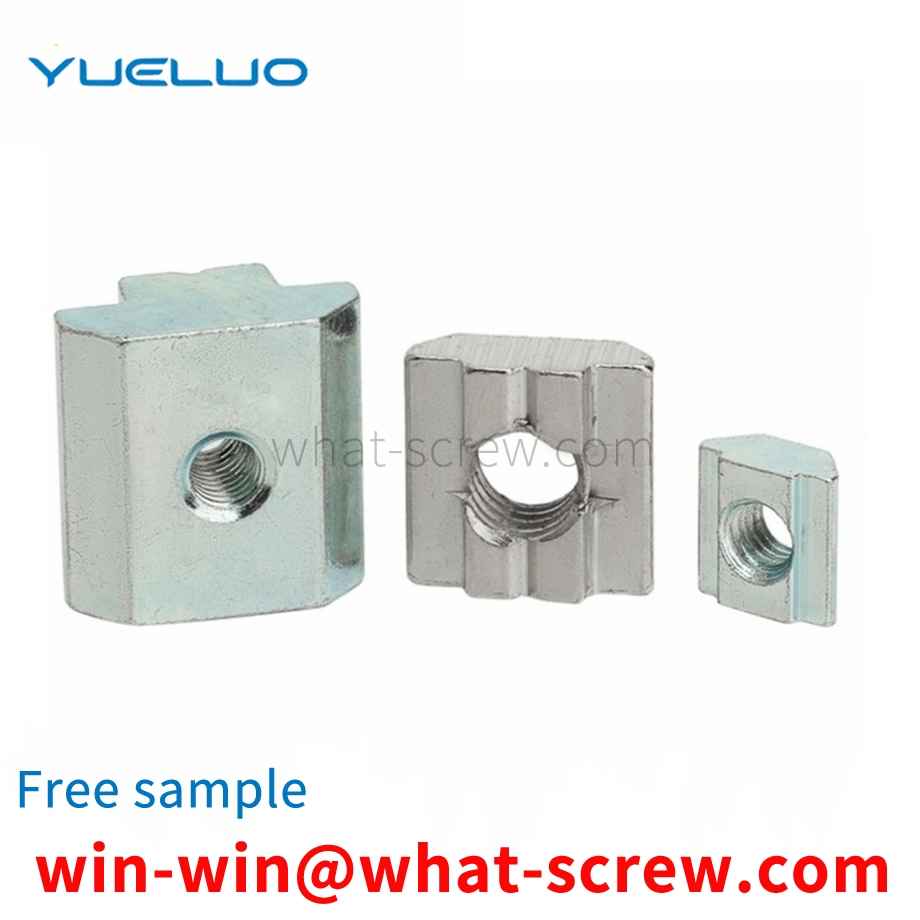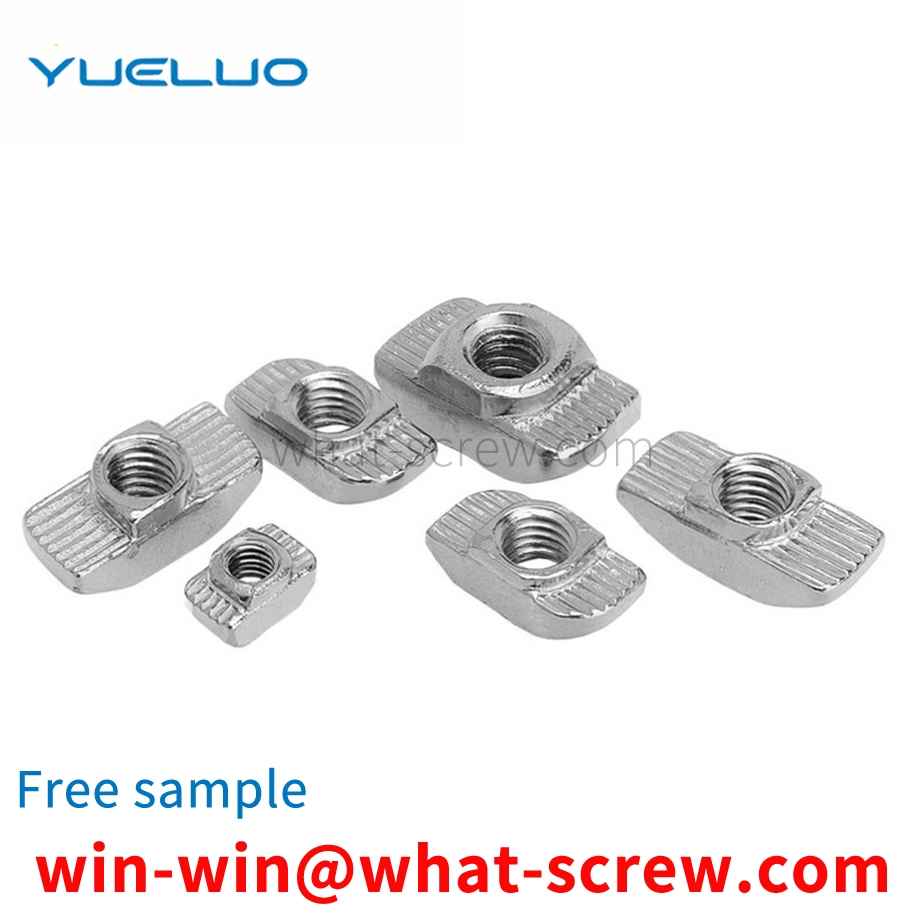Stud bolts are manufactured in accordance with GB897-GB901 standards, the materials used are: Q235, 45#, 40Cr, 35CrMoA, Q345D, the specifications are: M3mm-M100mm, and the length can be customized according to user needs. High strength stud bolts, materials are 35#, 45#, 35CrMoA, 25Cr2MoV, 304, 316, 304L, 316L, 2H, 2HM, B7, B7M, B16, B8, 8, B8M, 8M, widely used in electric power, chemical industry , oil refining, valves, railways, bridges, steel structures, automobile and motorcycle accessories and other fields: generally used in mining machinery, bridges, automobiles, motorcycles, boiler steel structures, pendant towers, long-span steel structures and large buildings, etc. . Representation method of stud bolts: General stud bolts are expressed as: M12×100 GB 901-88 (standard) 35#/35# (material) 8.8 grade/8 grade (modulation grade) means: diameter = 12mm length = 100mm GB 901-88 adopts the national standard (of course, the industry standard can also be used as needed) stud bolt standard: GB 900-1988 Introduction to stud bolts Stud bolts save time and cost All stud bolt structures do not require drilling, Steps such as punching, threading, riveting, threading and finishing continue to expand the application potential of structural design, high current and small penetration. Therefore, welding to very thin sheets is possible. The workpiece for stud welding must be welded from one side. Can be soldered in all positions, with the help of extenders on vertical bulkheads that can be restricted. Since it is welded for a short time and there is little deformation after welding, no trimming is required. Because the welded structure does not require drilling, there is no leakage. The joint can achieve high strength, that is, the joint strength of stud welding is greater than the strength of the stud itself. How to install studs Good economy The advantage of other welding methods is the welding power. For mass-produced workpieces, standard studs are low cost. There are various types of equipment and welding torches, and the acquisition cost of equipment is relatively low. According to the product, it can be made into a multi-station automatic welding machine, or a high-precision gantry-type CNC automatic welding machine. Stud welding has high quality reproducibility and low rejection rate. However, in the application of stud welding, it should be noted that, like other fusion welding, there are certain restrictions on the carbon content in the steel. For structural steel studs, welding should be performed according to the recommended combination of stud material and base metal. There will be infusibility with the base metal. Combinations of stud material and base metal outside the recommended range shall be tested to determine the weldability and the product design requirements of the anchor bolt for the possibility of relevant inspection and evaluation.
Guangdong Yueluo Hardware Industry Co., Ltd. was founded in 1998, and the factory was established in Feilong Industrial Zone, Xiaolan Town, Zhongshan City, Guangdong Province, with an investment of 10 million yuan. The main production is a variety of national standard, non-standard, British, American, metric screws. Mainly include: special screws for the electronics industry (machine screws, self-tapping screws, special screws): nuts (general nuts, flange nuts, external teeth nuts): Washers (external teeth, internal teeth, flat springs) Gaskets, etc.); lathes (precision automatic lathe parts, connecting parts, embedded parts, fasteners, decorative parts, etc.).
China is the world's largest producer of carbon steel fasteners such as screws, nuts and bolts, and the EU is a major market for these products. In January 2009, the EU decided to impose anti-dumping duties of 26.5% to 85% on Chinese carbon steel fastener products. On July 31 of the same year, China resorted to the relevant EU legislation and anti-dumping measures to the WTO dispute settlement mechanism. The case became China's first lawsuit against the EU at the WTO. On July 15, 2011, the WTO Appellate Body issued a report and finally ruled that China won the case in the trade dispute with the European Union on fasteners. The head of the Department of Treaty and Law of the Ministry of Commerce of China welcomed the ruling on the 16th, and said that China's victory in the case is of great significance, which will help improve the competitive environment for Chinese companies in the international market including the European Union, and will also strengthen the WTO members' interest in the case. Confidence in WTO rules and the multilateral trading system. This is not only a victory for China's industry, but also a victory for WTO rules, the official said. The WTO Appellate Body found in its ruling report issued on the 15th that Article 9(5) of the EU's Basic Anti-dumping Regulations on individual tax rates violated WTO rules; at the same time, the Appellate Body overturned some of the panel's rulings and supported China's position , ruled that the EU's anti-dumping measures against Chinese screws, nuts, bolts and other carbon steel fasteners also violated WTO rules in terms of domestic industry identification, normal value and fair comparison of export prices. The head of the Treaty and Law Department of the Ministry of Commerce of China said that the EU is one of the WTO members that has initiated the most anti-dumping investigations against Chinese products in the world. unfair treatment. He said that China hopes that the EU will cancel the legislation and discriminatory anti-dumping measures that are inconsistent with WTO rules as soon as possible, treat Chinese export enterprises fairly, and effectively safeguard free trade and fair competition.
Further, the clamping mechanism includes two clamping plates placed between the two fixing blocks, a bearing seat is installed on one side of each of the clamping plates, a bearing is installed inside the bearing seat, and the bearing is The inner ring is snap-connected with an elastic adjustment screw, and the other end of the elastic adjustment screw penetrates the fixing block and is placed outside the fixing block.
The working principle of the nut is to use the friction between the nut and the bolt for self-locking. However, the reliability of this self-locking is reduced under dynamic loads. In some important occasions, we will take some anti-loosening measures to ensure the reliability of the nut locking. Among them, the use of lock nuts is one of the anti-loosening measures. There are also two types of locking nuts. One is to use two identical nuts to screw on the same bolt, and a tightening torque is added between the two nuts to make the bolt connection reliable. The other is a special lock nut, which needs to be used together with a lock washer. As shown in FIG. 1, a plastic gasket 2 is arranged in the center of the nut 1 to play a locking effect, but the process is complicated and the production is inconvenient. One is to drill through threaded holes from the outer surface of the nut to the inner thread surface (usually 2, distributed at 90 on the outer surface), which are used to screw in small-diameter countersunk head screws. The purpose is to apply a thread to the thread. A centripetal force prevents the lock nut from loosening. At present, the lock nut with better quality on the market is inlaid with small copper pieces that are consistent with the thread of the lock nut on the inner surface of the nut, which is used to prevent the radial jacking screw from directly contacting the locked thread and being damaged. By. This kind of lock nut is gradually applied in the shaft end locking of rotating motion parts, such as the anti-looseness of the bearing at the mounting end of the ball screw. The process is equally complex.
We have many years of experience in the production and sales of screws, nuts, flat washers, etc. The main products are: percussion rivets, copper embedded, GB6178, fixed pins and other products, we can provide you with suitable fastener solutions for you.



















 Service Hotline
Service Hotline




